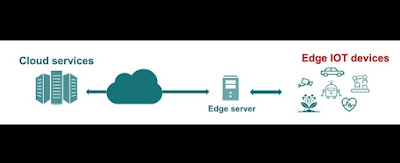วันเสาร์ที่ 28 พฤษภาคม พ.ศ. 2565
วันจันทร์ที่ 23 พฤษภาคม พ.ศ. 2565
Cloud native platform
Cloud native technologies focus on minimizing users' operational burden. Frequently, cloud-native applications are built as a set of microservices that run in Docker containers, and may be orchestrated in Kubernetes and managed and deployed using DevOps and Git CI workflows (although there is a large amount of competing open source that supports cloud-native development). The advantage of using Docker containers is the ability to package all software needed to execute into one executable package.
สัปปุริสทานสูตร
[๑๔๘] ดูกรภิกษุทั้งหลาย สัปปุริสทาน ๕ ประการนี้ ๕ ประการเป็นไฉน คือ
สัตบุรุษย่อมให้ทานด้วยศรัทธา ๑ย่อมให้ทานโดยเคารพ ๑
ย่อมให้ทานโดยกาลอันควร ๑
เป็นผู้มีจิตอนุเคราะห์ให้ทาน ๑
ย่อมให้ทานไม่กระทบตนและผู้อื่น ๑
ดูกรภิกษุทั้งหลาย สัตบุรุษครั้นให้ทานด้วยศรัทธาแล้ว
ย่อมเป็นผู้มั่งคั่ง
มีทรัพย์มาก
มีโภคะมาก
และเป็นผู้มีรูปสวยงาม
น่าดู น่าเลื่อมใส
ประกอบด้วยผิวพรรณงามยิ่งนัก
ย่อมเป็นผู้มั่งคั่ง
มีทรัพย์มาก
มีโภคะมาก
และเป็นผู้มีบุตรภรรยา
ทาส คนใช้หรือคนงาน
เป็นผู้เชื่อฟัง
เงี่ยโสตลงสดับคำสั่ง
ตั้งใจใคร่รู้
ย่อมเป็นผู้มั่งคั่ง
มีทรัพย์มาก
มีโภคะมาก
และย่อมเป็นผู้มีความต้องการที่เกิดขึ้นตามกาลบริบูรณ์
มีทรัพย์มาก
มีโภคะมาก
และเป็นผู้มีจิตน้อมไปเพื่อบริโภคกามคุณ ๕ สูงยิ่งขึ้น
ในที่ที่ทานนั้นเผล็ดผล
ครั้นให้ทานไม่กระทบตนและผู้อื่นแล้ว
ย่อมเป็นผู้มั่งคั่ง
มีทรัพย์มาก มีโภคะมาก
และย่อมเป็นผู้มีโภคทรัพย์ไม่มีภยันตรายมาแต่ที่ไหนๆคือ
จากไฟ
จากน้ำ
จากพระราชา
จากโจร
จากคนไม่เป็นที่รัก
หรือจากทายาทในที่ที่ทานนั้นเผล็ดผล
ดูกรภิกษุทั้งหลาย สัปปุริสทาน ๕ ประการนี้แล ฯ
พระไตรปิฎก เล่มที่ ๒๒ พระสุตตันตปิฎก เล่มที่ ๑๔ อังคุตตรนิกาย ปัญจก-ฉักกนิบาต
วันศุกร์ที่ 20 พฤษภาคม พ.ศ. 2565
Cloud-Edge-End vs Cloud-Fog-Edge
Cloud-Edge-End architecture :
With the increasing production of Big Data and due to latency, privacy, and other concerns, a Cloud-Edge-End computing paradigm has emerged in order to facilitate Big Data processing in proper places. This infrastructure seamlessly integrates hardware and software resources across multiple computing tiers, from the End to Edge, and to the Cloud. The flexibility of hierarchical cloud-edge-end computing architecture makes possible to decide whether data processing and analysis—including data cleaning, machine learning training, and decision making—applied to data coming from end sensors is carried out directly at the end device in-place, the computing edge or uploaded to the cloud infrastructures with higher computation capabilities. Therefore, advanced cloud–edge–end computing architectures needs to provide the kind of support that IoT applications need to deploy data processing and analytic methods in a flexible, efficient and scalable way. (cf. https://www.journals.elsevier.com/journal-of-systems-architecture/call-for-papers/special-issue-on-cloud-edge-end-architecture-for-internet-of-things-applications-vsi-cloud-edge-end-iot)
So the term End refers to end devices and the term Edge refers to network edge.
However, the term Cloud-Fog-Edge is found more on Google.
วันพฤหัสบดีที่ 19 พฤษภาคม พ.ศ. 2565
Mobile cloud emulator
A cloud service that emulates mobile OS. It's like a VM with mobile OS installed. Then VM can run on any computer platforms just like any cloud services. Examples include https://www.cloudemulator.net/




